Wearable Wireless Biosensor Technology for Monitoring Cattle: A Review
Abstract
:Simple Summary
Abstract
1. Introduction
2. Currently Available Wearable Wireless Biosensor Systems
2.1. Search Strategy and Quality Evaluation of the Constructed Database
2.2. Wearable Wireless Biosensor Systems by Type and Mounting Location
2.2.1. Ear Tag and Halter Type
2.2.2. Neck Collars
2.2.3. Reticulo-Rumen Bolus Sensors
2.2.4. Leg Tags
| Product | Company (Parent Company) | Country | Management Software | Mobile Application | Dimensions (mm × mm × mm) | Weight (g) | Battery Life | Range (m) | Built-in Sensors |
|---|---|---|---|---|---|---|---|---|---|
| Ear tag | |||||||||
| Smartbow | Smartbow GmbH (Zoetis Services LLC.) | AT | Herd Monitoring Software | ○ | 52 × 36 × 17 | 34 | 2 years | 300 | Accelerometer Temperature sensor |
| eSense Flex tag | SCR Engineers Ltd. (Allflex Europe SA) | IL | SenseHub™/ Heatime® Pro+ | ○ | 68 × 38 × 15 | 25 | 3 years | 200 × 500 * | Accelerometer |
| CowManager SensOor | Agis Automatisering BV | NL | CowManager System | ○ | 60 × 50 × 22 | 32 | 5 years | - | Accelerometer Temperature sensor |
| TekSensor tag | TekVet Technologies Co. | NL | TekAccess™ | × | - | - | - | - | Temperature sensor |
| Calf Tag | FeverTags LLC | US | TempVerified | × | - | 14 | 2 years | - | Temperature sensor |
| Data Collection Tag | FeverTags LLC | US | - | × | - | - | - | - | Temperature sensor |
| Halter | |||||||||
| RumiWatch Noseband Sensor | ITIN + HOCH GmbH | CH | RumiWatch Manager/RumiWatch Converter | × | - | - | 2 years | - | Accelerometer Temperature sensorPressure sensor |
| Product (Module) | Output Data | Data Reporting Frequency | Detection |
|---|---|---|---|
| Ear tag | |||
| Smartbow | High activity/Activity/Inactivity/Ruminating time/Location | Every hour | Heat/Health disorder |
| eSense™ Flex tag | Activity/Ruminating time/Heat index | Every 2 h | Heat/Health disorder |
| CowManager SensOor (Find my cow) | High activity/Activity/Inactivity/Ruminating time/Eating time/Temperature/(Location) | Every hour | Heat/Health disorder |
| TekSensor tag | Temperature | Every hour | Health disorder |
| Calf Tag | Temperature | Every 15 min | Health disorder |
| Data Collection Tag | Temperature | Every 15 min | Research purpose (Data acquisition only) |
| Halter | |||
| RumiWatch Noseband Sensor | Raw activity/Other chewing activity/Ruminating time/Regurgitated boli counts/Ruminating chew counts/Chews per bolus/Chews per minute/Eating time/Eating chew counts/Drinking time/Drinking gulp count/Temperature (ambient) | Every minute /Every hour | Research purpose (Data acquisition only) |
| Product | Company (Parent Company) | Country | Management Software | Mobile Application | Dimensions (mm × mm × mm) | Weight (g) | Battery Life | Range (m) | Built-In Sensors |
|---|---|---|---|---|---|---|---|---|---|
| CowScout Neck | GEA Farm Technologies, Inc. | DE | CowScout Activity monitoring system | ○ | - | - | 5 years | 100–1000 | Accelerometer |
| Rescounter III Neck | GEA Farm Technologies, Inc. | DE | DairyPlan C21 | × | - | - | - | - | Accelerometer |
| Axel Collar | Medria Inc. | FR | Farm’Life® | ○ | 100 × 48 × 30 | 160 | - | 1000 | Accelerometer |
| Smart Collar | HerdInsights | IE | HerdInsights Software | ○ | - | - | 5 years | - | Accelerometer |
| Moocall Heat | Moocall Ltd. | IE | Moocall Breedmanager | ○ | - | - | 60 days | 3G coverage | - |
| MooMonitor+ | Dairy Master | IE | Dairymaster MooMonitor | ○ | - | - | 10 years | 1000 | Accelerometer |
| SmartTag Neck | Pearson International LLC | IE | Pearson Heat Detection with Health Monitoring system | ○ | - | - | 10 years | - | Accelerometer |
| cSense Flex tag | SCR Engineers Ltd. (Allflex Europe SA) | IL | SenseHub™ Dairy/SenseHub™ Beef/ Heatime® Pro+ System | ○ | 84 × 64 | 98 | 7 years | 200 × 500 * | Accelerometer |
| SCR H-LD | SCR Engineers Ltd. (Allflex Europe SA) | IL | Heatime® HR System (Independent device)/ Heatime® Pro+ System (PC) | ○ | 84.1 × 64.5 | 98 | 7 years | 200 × 500 * | Accelerometer |
| SCR HR-LD/SCR HR-LDn | SCR Engineers Ltd.(Allflex Europe SA) | IL | Heatime® HR System(Independent device)/Heatime® Pro+ System (PC) | ○ | 84.1 × 64.5 | 98 | 7 years | 200 × 500 * | Accelerometer/Microphone |
| Qwes ISO LD/LD Smarttag | Lely | IL | Lely T4C management system | ○ | - | - | - | 75 | Accelerometer |
| Qwes H-LD | Lely | IL | Lely T4C management system | ○ | - | - | - | 500 | Accelerometer |
| Qwes HR-LDn | Lely | IL | Lely T4C management system | ○ | - | - | - | 500 | Accelerometer/Microphone |
| AfiCollar | Afimilk Agricultural Cooperative Ltd. | IL | AfiFarm Software/Afi2Go Pro Mobile App | ○ | - | - | - | 200–800 | Accelerometer |
| Milkrite|InterPuls Neck Tag | milkrite | InterPuls | IT | MyFarm | ○ | - | - | - | 75–500 | Accelerometer |
| Smarttag Neck | Nedap livestock management | NL | Nedap CowControl | ○ | - | - | 10 years | 75 | Accelerometer |
| Smarttag Neck/All in One | CRV international B.V. | NL | Ovalert | ○ | - | - | - | - | Accelerometer |
| Activity meter system | DeLaval International AB Inc. | SE | AlPro/DelPro Farm Management systems | ○ | - | 170 | 10 years | 200 | Accelerometer |
| Cowlar | Cowlar | US | Cowlar | × | 110 × 62 × 33 | 242 | 6 months | >3000 | Accelerometer/Temperature sensor |
| HeatSeeker II Neck | BouMatic LLC | US | HerdMetrix™ | ○ | - | 135 | 7 years | 100–750 | Accelerometer |
| RealTime SmartTag | BouMatic LLC | US | HerdMetrix™ | ○ | - | - | - | - | Accelerometer |
| Product (Module) | Output Data | Data Reporting Frequency | Detection |
|---|---|---|---|
| CowScout Neck | Activity/Inactivity/Ruminating time/Eating time | Every 2 h | Heat/Health disorder |
| Rescounter III Neck | Activity | Every 2 h | Heat |
| Axel Collar (Feed’Live/Heat’Live/Time’Live) | High activity/Inactivity/Ruminating time/Eating time/Lying time/Standing time | - | Heat/Health disorder |
| Smart Collar | Activity/Inactivity/Ruminating time/Eating time/Heat index | Every hour | Heat/Health disorder |
| Moocall Heat | - | - | Heat |
| MooMonitor+ | High activity/Activity/Low activity/Inactivity/Ruminating time/Eating time | Every hour | Heat/Health disorder |
| SmartTag Neck | Eating time/Not eating time | - | Heat/Health disorder |
| cSense Flex tag | Activity/Ruminating time/Heat index | Every 2 h | Heat/Health disorder |
| SCR H-LD | Activity/Heat index | Every 2 h | Heat/Health disorder |
| SCR HR-LD /SCR HR-LDn | Activity/Ruminating time/Heat index | Every 2 h | Heat/Health disorder |
| Qwes ISO LD | Activity | Every 2 h | Heat |
| Qwes ISO LD Smarttag (CowLocator) | Activity/Ruminating time/(Location) | Every 2 h | Heat/Health disorder |
| Qwes H-LD | Activity | Every 2 h | Heat |
| Qwes HR-LDn | Activity/Ruminating time | Every 2 h | Heat/Health disorder |
| AfiCollar | Activity/Ruminating time/Eating time | - | Heat/Health disorder |
| Milkrite|InterPuls Neck Tag | Activity/Ruminating time/Eating time/Location | - | Heat/Health disorder |
| Smarttag Neck (Cow positioning) | Activity/Inactivity/Ruminating time/Eating time/Eating bouts/(Location) | Continuously | Heat/Health disorder |
| Smarttag Neck | Eating time/Not eating time | Continuously | Heat/Health disorder |
| Smarttag All in One (Cow positioning) | Inactivity/Ruminating time/Eating time/Not eating time/(Location) | Continuously | Heat/Health disorder |
| Activity meter system | Activity/Heat index | Every hour | Heat/Health disorder |
| Cowlar | Activity/Ruminating time/Eating time/Step counts | - | Heat/Health disorder |
| HeatSeeker II Neck | Activity | Every 2 h | Heat |
| RealTime SmartTag (Activity/Rumination & Localization) | Activity/Inactivity/Ruminating time/Eating time/(Location) | Every 2 h | Heat/Health disorder |
| Product | Company (Parent Company) | Country | Management Software | Mobile Application | Dimensions (mm × mm × mm) | Weight (g) | Battery Life | Range (m) | Built-In Sensors |
|---|---|---|---|---|---|---|---|---|---|
| smaXtec classic/ pH Plus Bolus | smaXtec Animal Care Inc. | AT | smaXtec Messenger 4.0 | ○ | 105 × 35 132 × 35 | - | 4 years | 10–30 | Accelerometer/Temperature sensor/ (pH sensor) |
| San’Phone | Medria Inc. | FR | Farm’Life® | ○ | - | - | - | 1000 | Temperature sensor |
| Moow Rumen Bolus | Moow Farm Ltd. | HU | Moow system | ○ | - | - | 3 years | - | Temperature sensor/ pH sensor |
| Smart Rumen Bolus (Temp/ Temp + Activity/ Temp + Activity +pH) | Moonsyst Industrial Technologies Ltd. | HU | Moonsyst system | ○ | - | - | 6 years | - | Temperature sensor/(Accelerometer)/ (pH sensor) |
| LiveCare | uLikeKorea Co., Inc. | KR | Livestock HealthCare Services | ○ | 110 × 25 | - | 6 years | - | Accelerometer/Temperature sensor/ (pH sensor) |
| eBolus | eCow Ltd. | UK | eCow Software | × | 135 × 27 | 150 | 5 months | Handheld antenna | Temperature sensor/ pH sensor |
| HerdStrong | DVM Systems Co. | US | HerdStrong® Tru-Core system | ○ | 114 × 33 × 31 | - | 5 years | 137 | Temperature sensor |
| SmartStock | Smart Stock Ltd. | US | Healthy Cow Dairy | × | 85 × 30 | 120 | 5 years | 91–182 | Temperature sensor |
| Product (Module) | Output Data | Data Reporting Frequency | Detection |
|---|---|---|---|
| smaXtec classic/pH Plus Bolus | Activity/Temperature/(pH) | Every 10 min | Heat/Health disorder/Calving |
| San’Phone | Temperature | - | Research purpose (Data acquisition only) |
| Moow Rumen Bolus | Temperature/pH | - | Health disorder |
| Smart Rumen Bolus (Temp/Temp + Activity/Temp + Activity +pH) | Activity/Temperature/(pH) | - | Heat/Health disorder |
| LiveCare | Activity/Drinking bouts/Temperature/(pH) | Every hour | Heat/Health disorder/Calving |
| eBolus | Temperature/(pH) | Every 15 min | Research purpose (Data acquisition only) |
| HerdStrong | Temperature | Every 15 min | Heat/Health disorder/Calving |
| SmartStock | Temperature | Customizable | Health disorder |
| Product | Company (Parent Company) | Country | Management Software | Mobile Application | Dimensions (mm × mm × mm) | Weight (g) | Battery Life | Range (m) | Built-In Sensors |
|---|---|---|---|---|---|---|---|---|---|
| Rumiwatch pedometer | ITIN + HOCH GmbH | CH | RumiWatch Manager/RumiWatch Converter | ○ | - | 2 years | - | Accelerometer/Temperature sensor | |
| CowScout Leg | GEA Farm Technologies, Inc. | DE | CowScout Activity monitoring system | ○ | - | - | 5 years | 100–1000 | Accelerometer |
| Rescounter III Leg | GEA Farm Technologies, Inc. | DE | DairyPlan C21 | × | - | - | - | - | Accelerometer |
| IceTag/IceQube (for research) | IceRobotics Ltd. | UK | IceReader & IceManager | × | 65 × 60 × 30 96 × 81 × 31 | 130 | 2 years | - | Accelerometer |
| IceQube | IceRobotics Ltd. | UK | CowAlert | ○ | 96 × 81 × 31 | 130 | 2 years | - | Accelerometer |
| Breeder Tag | Genus Breeding Ltd. | UK | Breeder Tag System | ○ | - | - | 5 years | 700 | Accelerometer |
| SmartTag Leg | Pearson International LLC | IE | Pearson Heat Detection with Health Monitoring system | ○ | - | - | 10 years | - | Accelerometer |
| AfiAct II | Afimilk Agricultural Cooperative Ltd. | IL | AfiFarm Software/Afi2Go Pro Mobile App | ○ | - | 5 years | 200–800 | Accelerometer | |
| Track A Cow | ENGS Systems | IL | EcoHerd Software | × | 68 × 50 × 26 | 124 | 6 years | 700–2000 | Accelerometer |
| milkrite|InterPuls Pedometer | milkrite | InterPuls | IT | MyFarm | ○ | - | - | - | 75–1000 | Accelerometer |
| Gyuho (cow step) SaaS | Fujitsu | JP | Gyuho SaaS system | × | - | - | - | - | Accelerometer |
| Smarttag Leg | Nedap livestock management | NL | Nedap CowControl | ○ | - | - | 10 years | 75 | Accelerometer |
| Smarttag Leg | CRV international B.V. | NL | Ovalert | ○ | - | - | - | - | Accelerometer |
| HeatSeeker II Leg | BouMatic LLC | US | HerdMetrix™ | ○ | - | 135 | 7 years | 50 | Accelerometer |
| Product (Module) | Output Data | Data Reporting Frequency | Detection |
|---|---|---|---|
| Rumiwatch pedometer | Raw activity/Lying time/Standing time/Walking time/Stand up bouts/Lie down bouts/Step counts/Temperature (ambient) | Every minute/Every hour | Research purpose (Data acquisition only) |
| CowScout Leg | Activity/Lying time/Standing time/Walking time/Stand up bouts/Step counts | Every 2 h | Heat/Health disorder |
| Rescounter III Leg | Activity | Every 2 h | Heat |
| IceTag/IceQube (for research) | Activity/Lying time/Standing time/Stand up bouts/Lie down bouts/Step counts | Customizable | Research purpose (Data acquisition only) |
| IceQube | Activity/Lying time/Standing time/Stand up bouts/Lie down bouts/Step counts | Every 15 min | Heat/Health disorder |
| Breeder Tag | Activity/Lying time/Step counts | Every 15 min | Heat/Health disorder |
| SmartTag Leg | Inactivity/Lying time/Standing time/Step counts | - | Heat/Health disorder |
| AfiAct II | Lying time/Lie down bouts/Step counts | Every hour | Heat/Health disorder/Calving |
| Track A Cow | Lying time/Standing time/Step counts | Every 6 min | Heat/Health disorder |
| milkrite|InterPuls Pedometer | Activity/Lying time/Standing time/Walking time/Stand up bouts/Step counts | NA | Heat/Health disorder |
| Gyuho (cow step) SaaS | Step counts | Every hour | Heat |
| Smarttag Leg | Activity/Lying time/Standing time/Walking time/Stand up bouts/Step counts | Continuously | Heat/Health disorder |
| Smarttag Leg | Lying time/Stand up bouts/Step counts | Continuously | Heat/Health disorder |
| HeatSeeker II Leg | Activity | Every 2 h | Heat |
2.2.5. Tail and Vagina Mounted Types
3. Literature Review on the Evaluation of Parameters Generated by Wearable Wireless Biosensor Systems
3.1. Search Strategy, Study Selection, and Quality Assessment
3.2. Evaluation of Wearable Wireless Biosensor Systems
3.3. Statistical Analysis
3.3.1. Feeding Behavior
Eating Time
Rumination Time
Drinking Time
3.3.2. Activity Behavior
Lying Time
Standing Time
Walking Time
Step Count
Active Time
Inactive Time (Resting Time)
3.3.3. Rumen Status
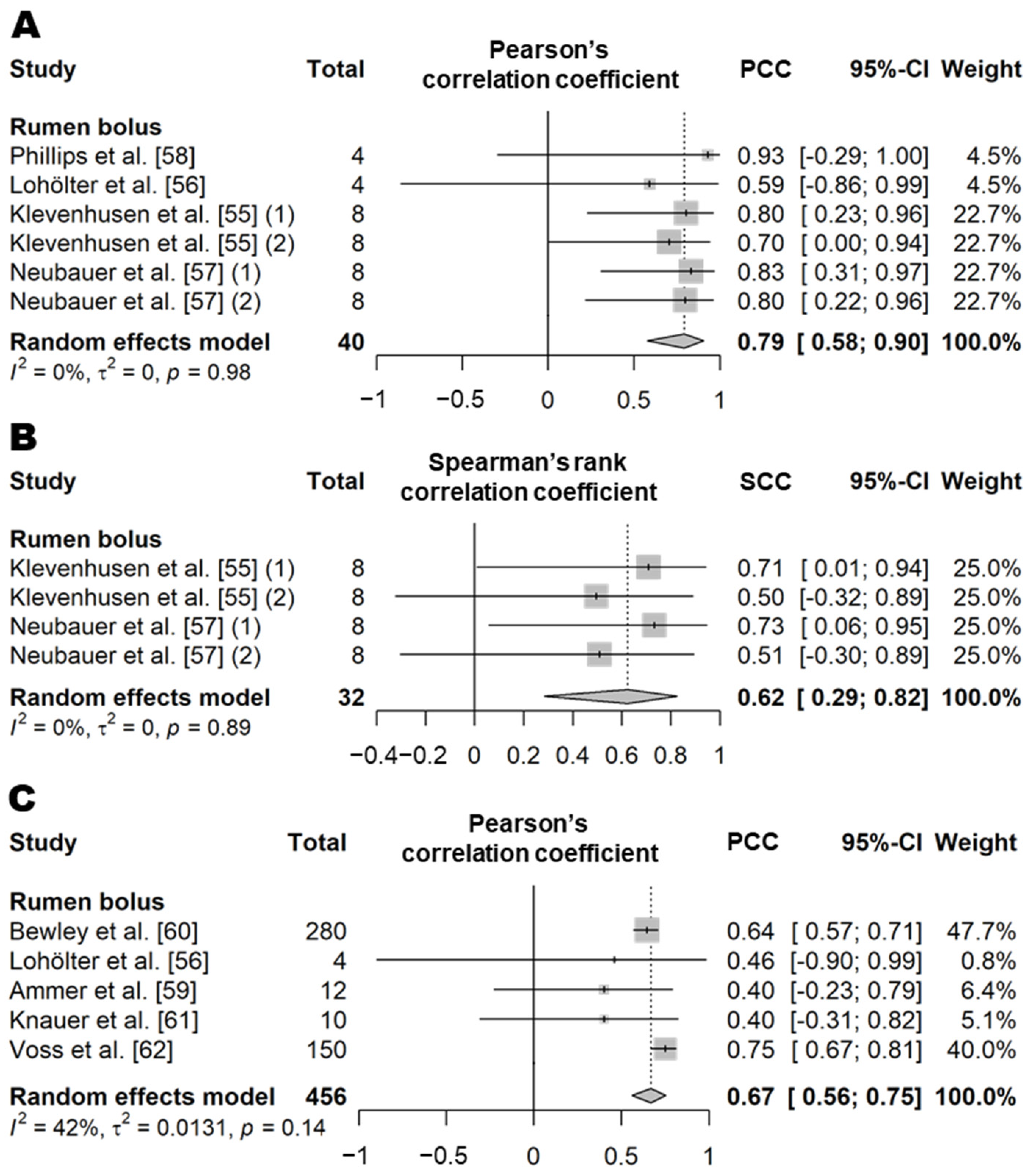
| Diagnostic Accuracy 1,2 | ||||||||||||
|---|---|---|---|---|---|---|---|---|---|---|---|---|
| Sensitivity | Specificity | Accuracy | Precision | |||||||||
| Variable | Study No. | n | % (95% CI) | Study No. | n | % (95% CI) | Study No. | n | %(95% CI) | Study No. | n | % (95% CI) |
| Feeding behavior | ||||||||||||
| Eating time | 10 | 220 | 84.9 (70.0–92.7) | 9 | 210 | 96.3 (91.7–98.4) | 7 | 184 | 90.8 (86.3–93.9) | 9 | 210 | 87.3 (72.9–94.3) |
| Ruminating time | 9 | 205 | 92.2 (85.6–95.9) | 8 | 195 | 95.4 (91.0–97.7) | 6 | 169 | 93.9 (91.0–95.1) | 8 | 195 | 87.0 (77.7–92.5) |
| Drinking time | 4 | 149 | 21.9 (5.5–37.1) | 4 | 149 | 99.9 (99.7–100) | 4 | 149 | 98.8 (98.0–99.3) | 4 | 149 | 30.8 (15.0–45.1) |
| Activity behavior | ||||||||||||
| Lying time | 5 | 53 | 99.8 (98.2–100) | 5 | 53 | 99.9 (99.6–100) | - | - | - | 4 | 44 | 99.9 (96.6–100) |
| Standing time | 4 | 38 | 95.3 (87.9–98.2) | 4 | 38 | 98.3 (94.7–99.4) | - | - | - | 3 | 29 | 97.9 (86.7–99.7) |
| Walking time | 5 | 48 | 33.8 (1.1–60.0) | 5 | 48 | 98.0 (96.0–99.0) | - | - | - | 4 | 39 | 26.6 (10.5–57.1) |
| Active time | 3 | 134 | 93.1 (90.3–95.1) | 3 | 134 | 93.4 (90.8–95.3) | 3 | 134 | 93.4 (90.7–95.3) | 3 | 134 | 89.9 (85.7–92.9) |
| Inactive time | 3 | 28 | 59.2 (22.7–81.1) | 3 | 28 | 98.2 (95.6–99.3) | - | - | - | 3 | 28 | 89.3 (75.7–95.5) |
4. Summary and Implications
5. Conclusions
Supplementary Materials
Author Contributions
Funding
Institutional Review Board Statement
Informed Consent Statement
Data Availability Statement
Conflicts of Interest
References
- Bewley, J. Precision dairy farming: Advanced analysis solutions for future profitability. In Proceedings of the First North American Conference on Precision Dairy Management, Toronto, ON, Canada, 2–5 March 2010; pp. 2–5. [Google Scholar]
- Rutten, C.; Velthuis, A.; Steeneveld, W.; Hogeveen, H. Invited review: Sensors to support health management on dairy farms. J. Dairy Sci. 2013, 96, 1928–1952. [Google Scholar] [CrossRef] [PubMed]
- Caja, G.; Castro-Costa, A.; Knight, C.H. Engineering to support wellbeing of dairy animals. J. Dairy Res. 2016, 83, 136–147. [Google Scholar] [CrossRef] [PubMed]
- Dominiak, K.; Kristensen, A. Prioritizing alarms from sensor-based detection models in livestock production—A review on model performance and alarm reducing methods. Comput. Electron. Agric. 2017, 133, 46–67. [Google Scholar] [CrossRef]
- Bewley, J.; Grott, M.; Einstein, M.; Schutz, M. Impact of intake water temperatures on reticular temperatures of lactating dairy cows. J. Dairy Sci. 2008, 91, 3880–3887. [Google Scholar] [CrossRef]
- Brod, D.L.; Bolsen, K.K.; Brent, B.E. Effect of water temperature in rumen temperature, digestion and rumen fermentation in sheep. J. Anim. Sci. 1982, 54, 179–182. [Google Scholar] [CrossRef] [Green Version]
- Hicks, L.C.; Hicks, W.S.; Bucklin, R.A.; Shearer, J.K.; Bray, D.R.; Carvalho, P.S.A.V.; Soto, P.; Carvalho, V. Comparison of methods of measuring deep body temperatures of dairy cows. In Proceedings of the Livestock Environment VI, Proceedings of the 6th International Symposium, Louisville, KY, USA, 21–23 May 2001; pp. 432–438. [Google Scholar]
- Bicalho, R.; Galvão, K.; Warnick, L.; Guard, C. Stillbirth parturition reduces milk production in Holstein cows. Prev. Vet. -Med. 2008, 84, 112–120. [Google Scholar] [CrossRef]
- Burfeind, O.; Suthar, V.; Voigtsberger, R.; Bonk, S.; Heuwieser, W. Validity of prepartum changes in vaginal and rectal temperature to predict calving in dairy cows. J. Dairy Sci. 2011, 94, 5053–5061. [Google Scholar] [CrossRef] [Green Version]
- A Lammoglia, M.; A Bellows, R.; E Short, R.; E Bellows, S.; Bighorn, E.G.; Stevenson, J.S.; Randel, R.D. Body temperature and endocrine interactions before and after calving in beef cows. J. Anim. Sci. 1997, 75, 2526–2534. [Google Scholar] [CrossRef] [Green Version]
- Wrenn, T.; Bitman, J.; Sykes, J. Body temperature variations in dairy cattle during the estrous cycle and pregnancy. J. Dairy Sci. 1958, 41, 1071–1076. [Google Scholar] [CrossRef]
- Hinkle, D.E.; Wiersma, W.; Jurs, S.G. Applied Statistics for the Behavioral Sciences, 5th ed.; Houghton Mifflin College Division: Boston, MA, USA, 2003; Volume 663. [Google Scholar]
- DerSimonian, R.; Laird, N. Meta-analysis in clinical trials. Control Clin. Trials 1986, 7, 177–188. [Google Scholar] [CrossRef]
- Cooper, H.; Hedges, L.V.; Valentine, J.C. The Handbook of Research Synthesis and Meta-Analysis, 2nd ed.; Russell Sage Foundation: New York, NY, USA, 2009. [Google Scholar]
- Higgins, J.P.; Thompson, S.G.; Deeks, J.J.; Altman, D.G. Measuring inconsistency in meta-analyses. BMJ 2003, 327, 557–560. [Google Scholar] [CrossRef] [Green Version]
- Schwarzer, G. Meta: An R package for meta-analysis. R News 2007, 7, 40–45. [Google Scholar]
- Bikker, J.; Van Laar, H.; Rump, P.; Doorenbos, J.; Van Meurs, K.; Griffioen, G.; Dijkstra, J. Technical note: Evaluation of an ear-attached movement sensor to record cow feeding behavior and activity. J. Dairy Sci. 2014, 97, 2974–2979. [Google Scholar] [CrossRef]
- Borchers, M.; Chang, Y.; Tsai, I.; Wadsworth, B.; Bewley, J. A validation of technologies monitoring dairy cow feeding, ruminating, and lying behaviors. J. Dairy Sci. 2016, 99, 7458–7466. [Google Scholar] [CrossRef]
- Grinter, L.; Campler, M.; Costa, J. Technical note: Validation of a behavior-monitoring collar’s precision and accuracy to measure rumination, feeding, and resting time of lactating dairy cows. J. Dairy Sci. 2019, 102, 3487–3494. [Google Scholar] [CrossRef] [Green Version]
- Guccione, J.; D’Andrea, L.; Alsaaod, M.; Borriello, G.; Steiner, A.; Ciaramella, P. Validation of a noseband pressure sensor algorithm as a tool for evaluation of feeding behaviour in dairy Mediterranean buffalo (Bubalus bubalis). J. Dairy Res. 2019, 86, 40–42. [Google Scholar] [CrossRef]
- Hill, T.M.; Suarez-Mena, F.X.; Hu, W.; Dennis, T.S.; Schlotterbeck, R.L.; Timms, L.L.; Hulbert, L.E. Evaluation of an ear-attached movement sensor to record rumination, eating, and activity behaviors in 1-month-old calves. Prof. Anim. Sci. 2017, 33, 743–747. [Google Scholar] [CrossRef]
- Reynolds, M.; Borchers, M.; Davidson, J.; Bradley, C.; Bewley, J. Technical note: An evaluation of technology-recorded rumination and feeding behaviors in dairy heifers. J. Dairy Sci. 2019, 102, 6555–6558. [Google Scholar] [CrossRef]
- Roland, L.; Schweinzer, V.; Kanz, P.; Sattlecker, G.; Kickinger, F.; Lidauer, L.; Iwersen, M. Evaluation of a triaxial accelerometer for monitoring selected behaviors in dairy calves. J. Dairy Sci. 2018, 101, 10421–10427. [Google Scholar] [CrossRef] [Green Version]
- Ruuska, S.; Kajava, S.; Mughal, M.; Zehner, N.; Mononen, J. Validation of a pressure sensor-based system for measuring eating, rumination and drinking behaviour of dairy cattle. Appl. Anim. Behav. Sci. 2016, 174, 19–23. [Google Scholar] [CrossRef]
- Steinmetz, M.; Von Soosten, D.; Hummel, J.; Meyer, U.; Dänicke, S. Validation of the RumiWatch Converter V0.7.4.5 classification accuracy for the automatic monitoring of behavioural characteristics in dairy cows. Arch. Anim. Nutr. 2020, 74, 164–172. [Google Scholar] [CrossRef] [PubMed]
- Wolfger, B.; Timsit, E.; Pajor, E.A.; Cook, N.; Barkema, H.; Orsel, K. Technical note: Accuracy of an ear tag-attached accelerometer to monitor rumination and feeding behavior in feedlot cattle. J. Anim. Sci. 2015, 93, 3164–3168. [Google Scholar] [CrossRef] [PubMed] [Green Version]
- Zambelis, A.; Wolfe, T.; Vasseur, E. Technical note: Validation of an ear-tag accelerometer to identify feeding and activity behaviors of tiestall-housed dairy cattle. J. Dairy Sci. 2019, 102, 4536–4540. [Google Scholar] [CrossRef]
- Zehner, N.; Umstätter, C.; Niederhauser, J.J.; Schick, M. System specification and validation of a noseband pressure sensor for measurement of ruminating and eating behavior in stable-fed cows. Comput. Electron. Agric. 2017, 136, 31–41. [Google Scholar] [CrossRef]
- Molfino, J.; Clark, C.E.F.; Kerrisk, K.L.; García, S.C. Evaluation of an activity and rumination monitor in dairy cattle grazing two types of forages. Anim. Prod. Sci. 2017, 57, 1557–1562. [Google Scholar] [CrossRef]
- Pereira, G.; Heins, B.; Endres, M. Technical note: Validation of an ear-tag accelerometer sensor to determine rumination, eating, and activity behaviors of grazing dairy cattle. J. Dairy Sci. 2018, 101, 2492–2495. [Google Scholar] [CrossRef] [Green Version]
- Werner, J.; Leso, L.; Umstatter, C.; Niederhauser, J.; Kennedy, E.; Geoghegan, A.; Shalloo, L.; Schick, M.; O’Brien, B. Evaluation of the RumiWatchSystem for measuring grazing behaviour of cows. J. Neurosci. Methods 2018, 300, 138–146. [Google Scholar] [CrossRef]
- Merenda, V.R.; Marques, O.; Miller-Cushon, E.K.; Dilorenzo, N.; Laporta, J.; Chebel, R.C. Technical note: Validation of a system for monitoring individual behavior in beef heifers. J. Anim. Sci. 2019, 97, 4732–4736. [Google Scholar] [CrossRef]
- Poulopoulou, I.; Lambertz, C.; Gauly, M. Are automated sensors a reliable tool to estimate behavioural activities in grazing beef cattle? Appl. Anim. Behav. Sci. 2019, 216, 1–5. [Google Scholar] [CrossRef]
- Werner, J.; Umstatter, C.; Leso, L.; Kennedy, E.; Geoghegan, A.; Shalloo, L.; Schick, M.; O’Brien, B. Evaluation and application potential of an accelerometer-based collar device for measuring grazing behavior of dairy cows. Animal 2019, 13, 2070–2079. [Google Scholar] [CrossRef] [Green Version]
- Ambriz-Vilchis, V.; Jessop, N.S.; Fawcett, R.H.; Shaw, D.J.; Macrae, A.I. Comparison of rumination activity measured using rumination collars against direct visual observations and analysis of video recordings of dairy cows in commercial farm environments. J. Dairy Sci. 2015, 98, 1750–1758. [Google Scholar] [CrossRef] [PubMed] [Green Version]
- Burfeind, O.; Schirmann, K.; Von Keyserlingk, M.; Veira, D.; Weary, D.; Heuwieser, W. Technical note: Evaluation of a system for monitoring rumination in heifers and calves. J. Dairy Sci. 2011, 94, 426–430. [Google Scholar] [CrossRef] [PubMed]
- Elischer, M.; Arceo, M.; Karcher, E.; Siegford, J. Validating the accuracy of activity and rumination monitor data from dairy cows housed in a pasture-based automatic milking system. J. Dairy Sci. 2013, 96, 6412–6422. [Google Scholar] [CrossRef] [PubMed]
- Eslamizad, M.; Tümmler, L.-M.; Derno, M.; Hoch, M.; Kuhla, B. Technical Note: Development of a pressure sensor-based system for measuring rumination time in pre-weaned dairy calves. J. Anim. Sci. 2018, 96, 4483–4489. [Google Scholar] [CrossRef]
- Goldhawk, C.; Schwartzkopf-Genswein, K.; Beauchemin, K.A. Technical Note: Validation of rumination collars for beef cattle. J. Anim. Sci. 2013, 91, 2858–2862. [Google Scholar] [CrossRef] [Green Version]
- Kröger, I.; Humer, E.; Neubauer, V.; Kraft, N.; Ertl, P.; Zebeli, Q. Validation of a noseband sensor system for monitoring ruminating activity in cows under different feeding regimens. Livest. Sci. 2016, 193, 118–122. [Google Scholar] [CrossRef]
- Reiter, S.; Sattlecker, G.; Lidauer, L.; Kickinger, F.; Öhlschuster, M.; Auer, W.; Schweinzer, V.; Klein-Jöbstl, D.; Drillich, M.; Iwersen, M. Evaluation of an ear-tag-based accelerometer for monitoring rumination in dairy cows. J. Dairy Sci. 2018, 101, 3398–3411. [Google Scholar] [CrossRef] [Green Version]
- Rodrigues, J.P.P.; Pereira, L.G.R.; Neto, H.D.C.D.; Lombardi, M.C.; Lage, C.F.D.A.; Coelho, S.G.; Sacramento, J.P.; Machado, F.S.; Tomich, T.R.; Maurício, R.M.; et al. Technical note: Evaluation of an automatic system for monitoring rumination time in weaning calves. Livest. Sci. 2019, 219, 86–90. [Google Scholar] [CrossRef]
- Schirmann, K.; Von Keyserlingk, M.; Weary, D.; Veira, D.; Heuwieser, W. Technical note: Validation of a system for monitoring rumination in dairy cows. J. Dairy Sci. 2009, 92, 6052–6055. [Google Scholar] [CrossRef]
- Alsaaod, M.; Niederhauser, J.; Beer, G.; Zehner, N.; Schuepbach-Regula, G.; A Steiner, A. Development and validation of a novel pedometer algorithm to quantify extended characteristics of the locomotor behavior of dairy cows. J. Dairy Sci. 2015, 98, 6236–6242. [Google Scholar] [CrossRef] [Green Version]
- D’Andrea, L.; Guccione, J.; Alsaaod, M.; Deiss, R.; Di Loria, A.; Steiner, A.; Ciaramella, P. Validation of a pedometer algorithm as a tool for evaluation of locomotor behaviour in dairy Mediterranean buffalo. J. Dairy Res. 2017, 84, 391–394. [Google Scholar] [CrossRef] [Green Version]
- Henriksen, J.C.; Munksgaard, L. Validation of AfiTagII, a device for automatic measuring of lying behaviour in Holstein and Jersey cows on two different bedding materials. Animal 2019, 13, 617–621. [Google Scholar] [CrossRef]
- Mattachini, G.; Riva, E.; Bisaglia, C.; Pompe, J.C.A.M.; Provolo, G. Methodology for quantifying the behavioral activity of dairy cows in freestall barns. J. Anim. Sci. 2013, 91, 4899–4907. [Google Scholar] [CrossRef]
- Nielsen, P.P.; Fontana, I.; Sloth, K.H.; Guarino, M.; Blokhuis, H. Validation and comparison of 2 commercially available activity loggers. J. Dairy Sci. 2018, 101, 5449–5453. [Google Scholar] [CrossRef] [Green Version]
- Swartz, T.H.; McGilliard, M.L.; Petersson-Wolfe, C.S. The use of an accelerometer for measuring step activity and lying behaviors in dairy calves. J. Dairy Sci. 2016, 99, 9109–9113. [Google Scholar] [CrossRef] [Green Version]
- Trénel, P.; Jensen, M.B.; Decker, E.; Skjøth, F. Technical note: Quantifying and characterizing behavior in dairy calves using the IceTag automatic recording device. J. Dairy Sci. 2009, 92, 3397–3401. [Google Scholar] [CrossRef] [Green Version]
- Tullo, E.; Fontana, I.; Gottardo, D.; Sloth, K.; Guarino, M. Technical note: Validation of a commercial system for the continuous and automated monitoring of dairy cow activity. J. Dairy Sci. 2016, 99, 7489–7494. [Google Scholar] [CrossRef]
- Shepley, E.; Berthelot, M.; Vasseur, E. Validation of the ability of a 3D pedometer to accurately determine the number of steps taken by dairy cows when housed in tie-stalls. Agriculture 2017, 7, 53. [Google Scholar] [CrossRef] [Green Version]
- Ungar, E.; Nevo, Y.; Baram, H.; Arieli, A. Evaluation of the icetag leg sensor and its derivative models to predict behaviour, using beef cattle on rangeland. J. Neurosci. Methods 2018, 300, 127–137. [Google Scholar] [CrossRef]
- Wolfger, B.; Mang, A.; Cook, N.; Orsel, K.; Timsit, E. Technical note: Evaluation of a system for monitoring individual feeding behavior and activity in beef cattle. J. Anim. Sci. 2015, 93, 4110–4114. [Google Scholar] [CrossRef]
- Klevenhusen, F.; Pourazad, P.; Wetzels, S.U.; Qumar, M.; Khol-Parisini, A.; Zebeli, Q. Technical note: Evaluation of a real-time wireless pH measurement system relative to intraruminal differences of digesta in dairy cattle. J. Anim. Sci. 2014, 92, 5635–5639. [Google Scholar] [CrossRef] [PubMed]
- Lohölter, M.; Rehage, R.; Meyer, U.; Lebzien, P.; Rehage, J.; Dänicke, S. Evaluation of a device for continuous measurement of rumen pH and temperature considering localization of measurement and dietary concentrate proportion. Appl. Agric. For. Res. 2013, 63, 61–68. [Google Scholar] [CrossRef]
- Neubauer, V.; Humer, E.; Kröger, I.; Braid, T.; Wagner, M.; Zebeli, Q. Differences between pH of indwelling sensors and the pH of fluid and solid phase in the rumen of dairy cows fed varying concentrate levels. J. Anim. Physiol. Anim. Nutr. 2018, 102, 343–349. [Google Scholar] [CrossRef] [PubMed] [Green Version]
- Phillips, N.; Mottram, T.; Poppi, D.; Mayer, D.; McGowan, M.R. Continuous monitoring of ruminal pH using wireless telemetry. Anim. Prod. Sci. 2009, 50, 72–77. [Google Scholar] [CrossRef]
- Ammer, S.; Lambertz, C.; Gauly, M. Comparison of different measuring methods for body temperature in lactating cows under different climatic conditions. J. Dairy Res. 2016, 83, 165–172. [Google Scholar] [CrossRef]
- Bewley, J.; Einstein, M.; Grott, M.; Schutz, M. Comparison of reticular and rectal core body temperatures in lactating dairy cows. J. Dairy Sci. 2008, 91, 4661–4672. [Google Scholar] [CrossRef]
- Knauer, W.; Godden, S.; McDonald, N. Technical note: Preliminary evaluation of an automated indwelling rumen temperature bolus measurement system to detect pyrexia in preweaned dairy calves. J. Dairy Sci. 2016, 99, 9925–9930. [Google Scholar] [CrossRef]
- Voss, B.; Laue, H.-J.; Hoedemaker, M.; Wiedemann, S. Field-trial evaluation of an automatic temperature measurement device placed in the reticulo-rumen of pre-weaned male calves. Livest. Sci. 2016, 189, 78–81. [Google Scholar] [CrossRef]
- Benaissa, S.; Tuyttens, F.A.; Plets, D.; de Pessemier, T.; Trogh, J.; Tanghe, E.; Martens, L.; Vandaele, L.; Van Nuffel, A.; Joseph, W.; et al. On the use of on-cow accelerometers for the classification of behaviours in dairy barns. Res. Vet. -Sci. 2019, 125, 425–433. [Google Scholar] [CrossRef] [Green Version]
- Bossuyt, P.M.; Reitsma, J.B.; E Bruns, D.; A Gatsonis, C.; Glasziou, P.; Irwig, L.; Lijmer, J.G.; Moher, D.; Rennie, D.; De Vet, H.C.W.; et al. STARD 2015: An updated list of essential items for reporting diagnostic accuracy studies. BMJ 2015, 351, h5527. [Google Scholar] [CrossRef] [Green Version]
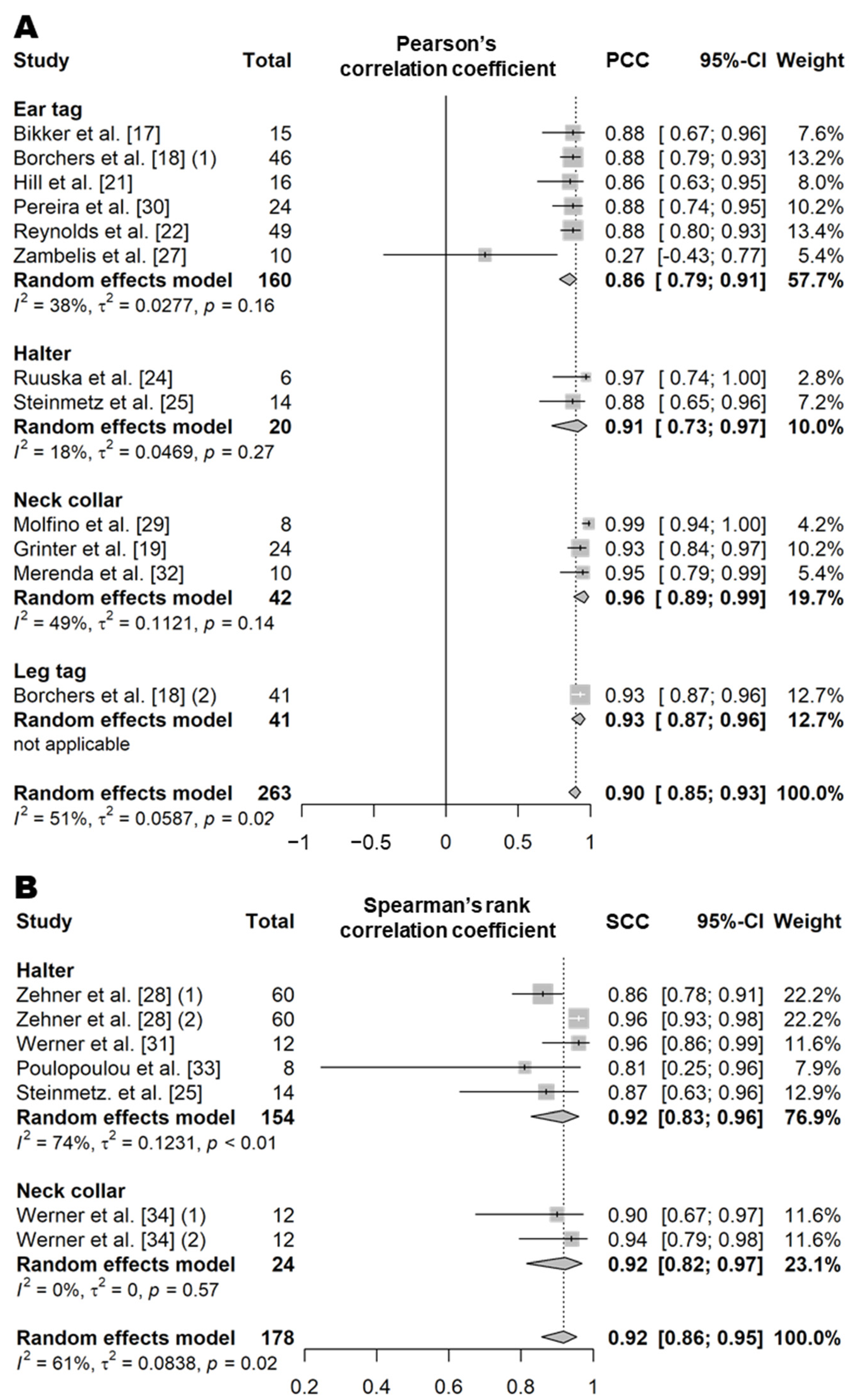
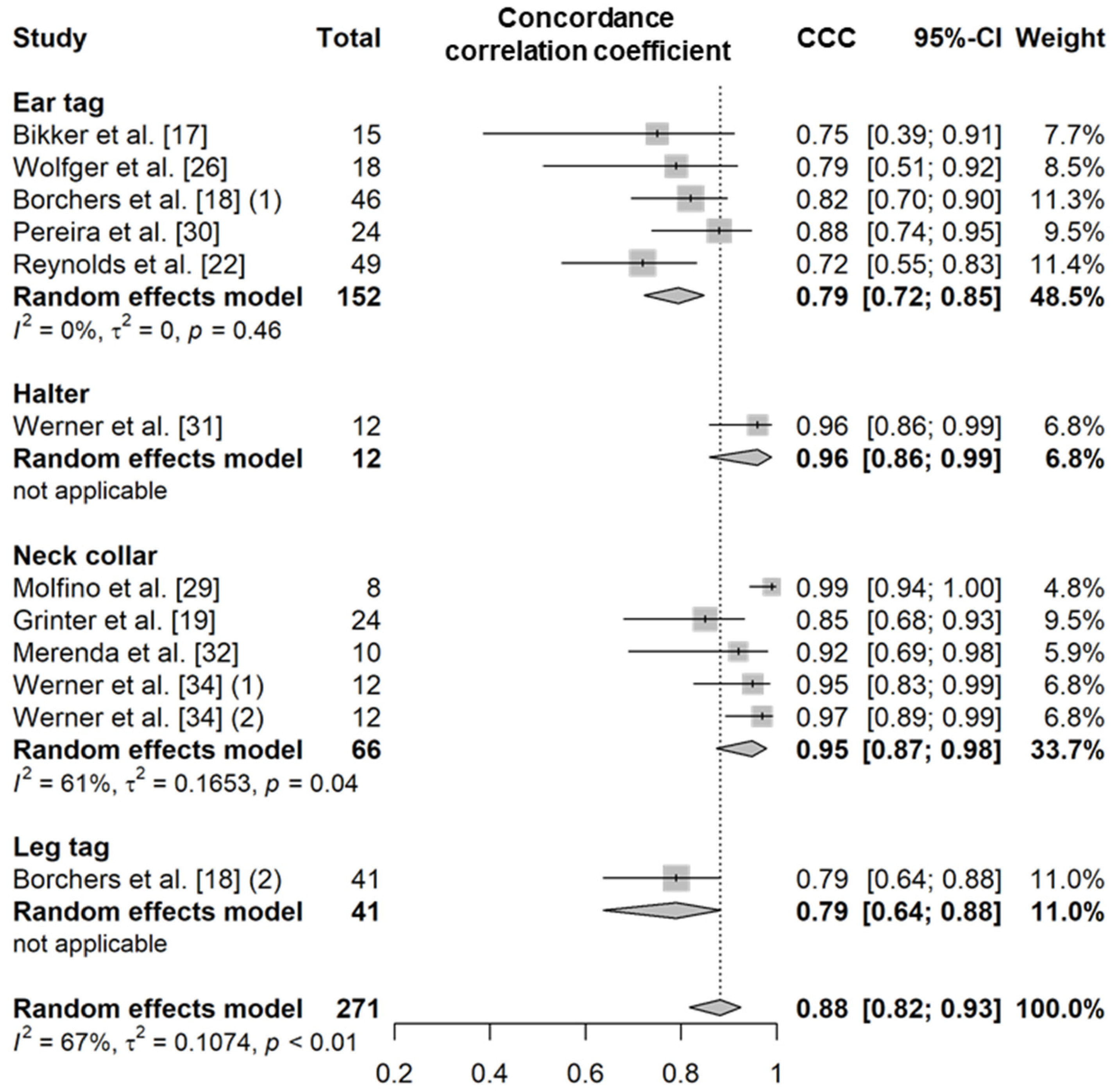
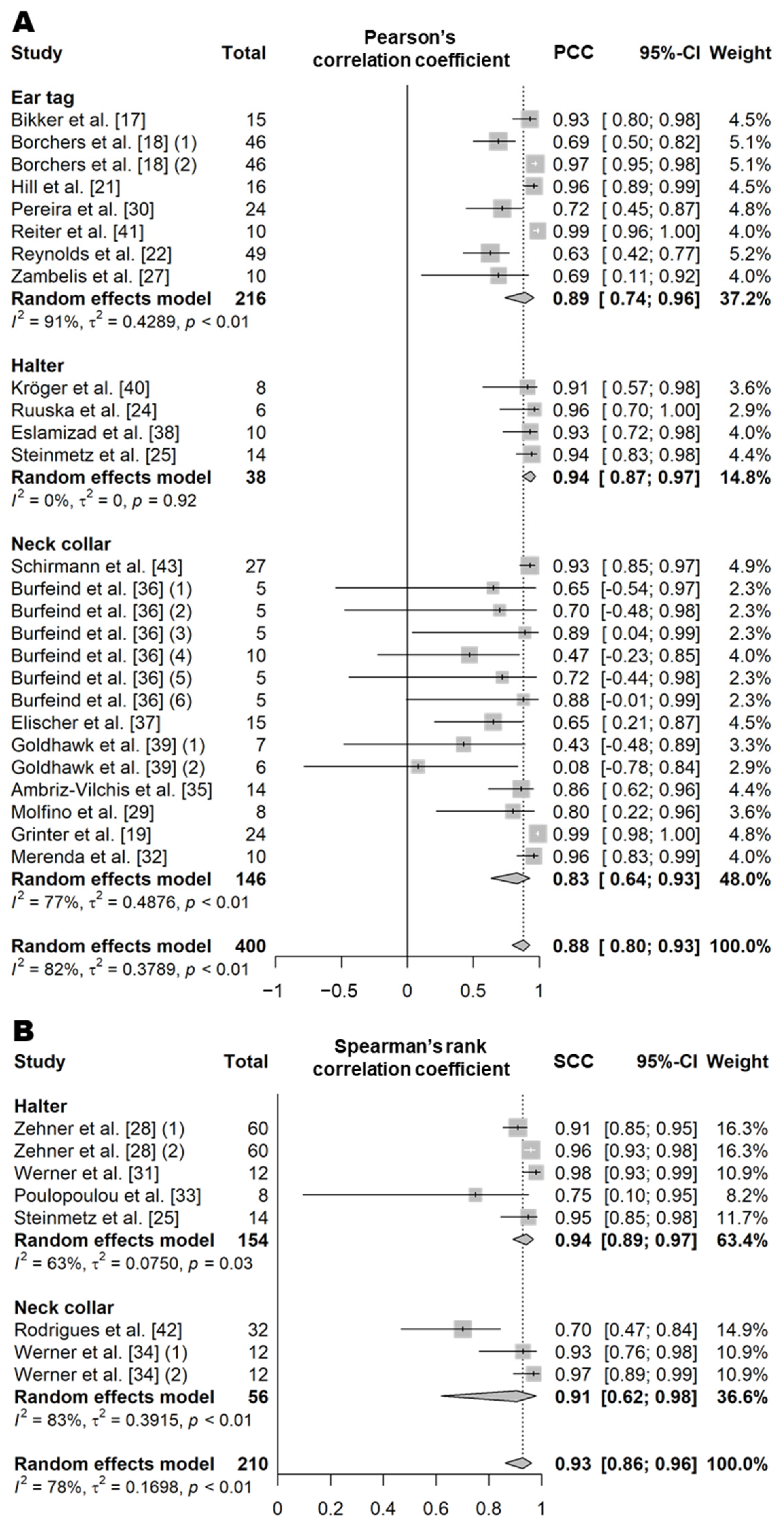
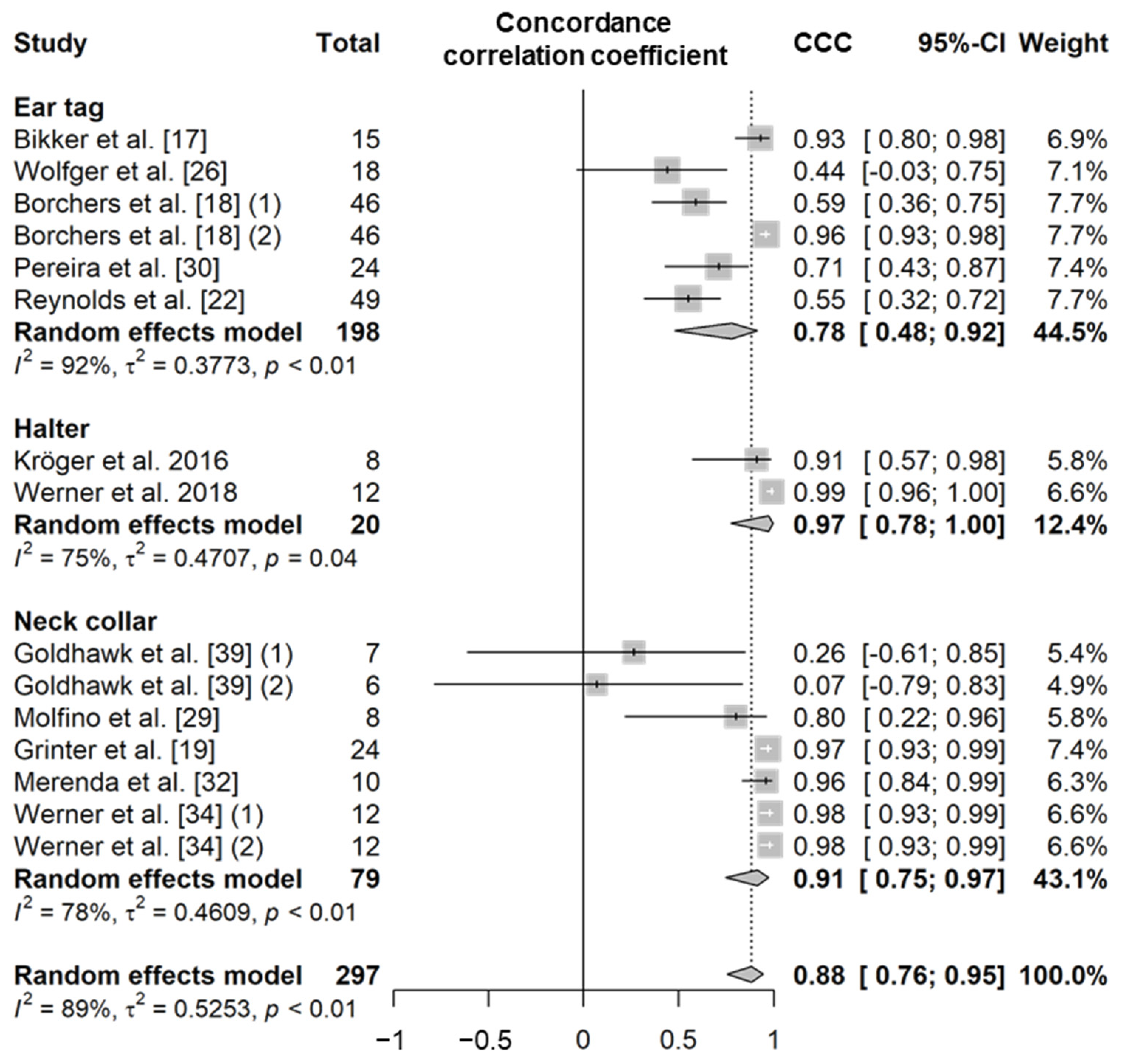

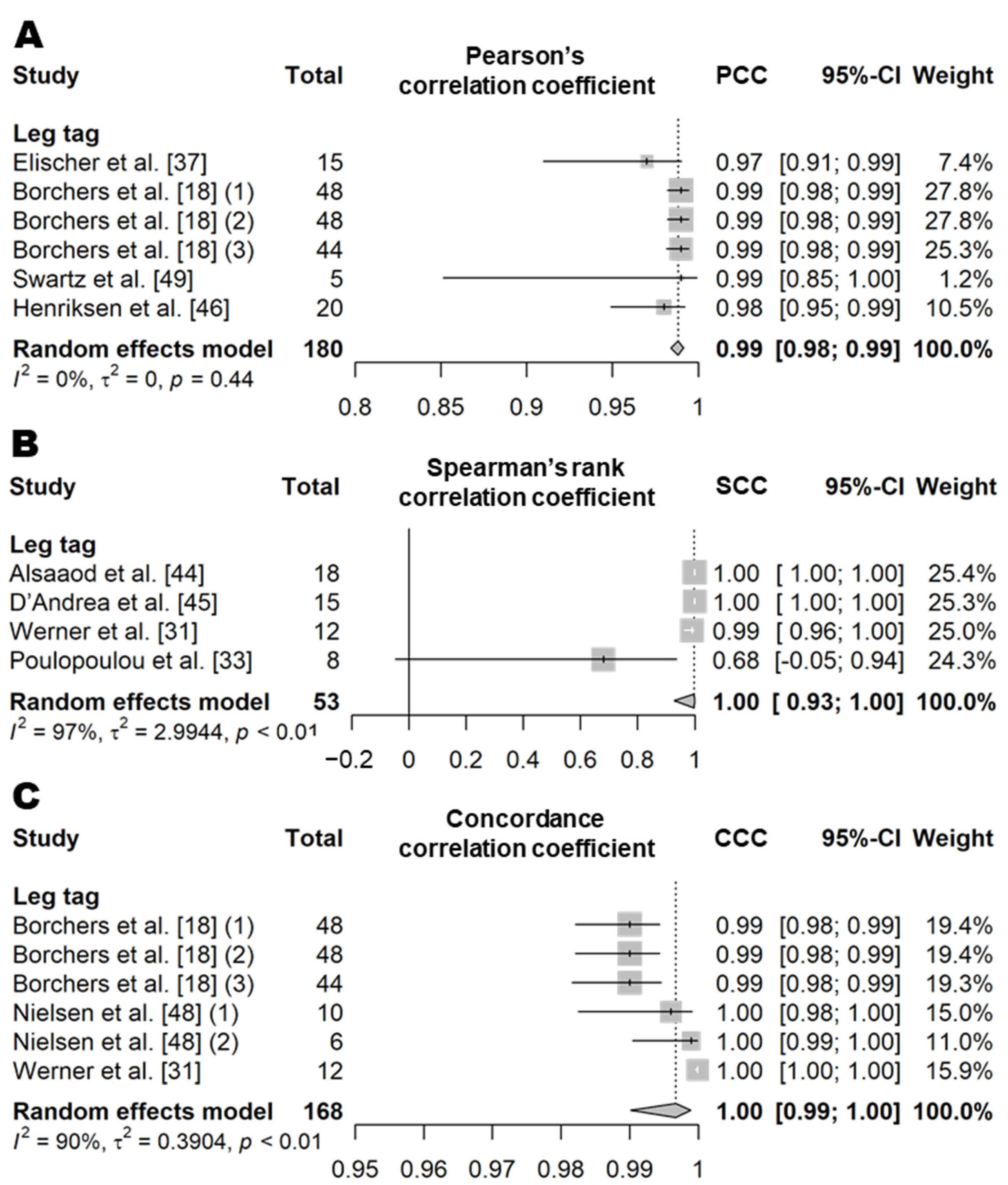
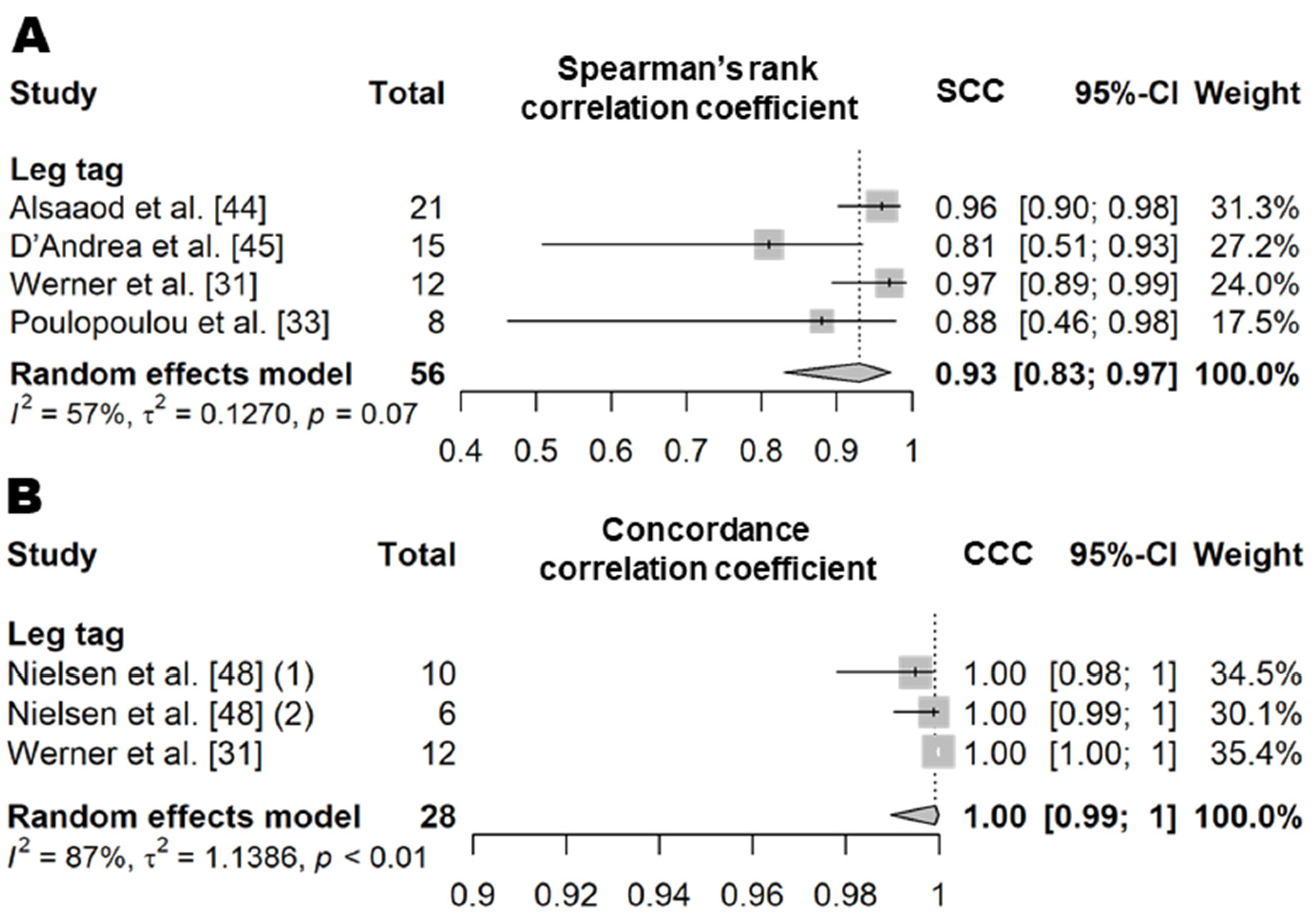
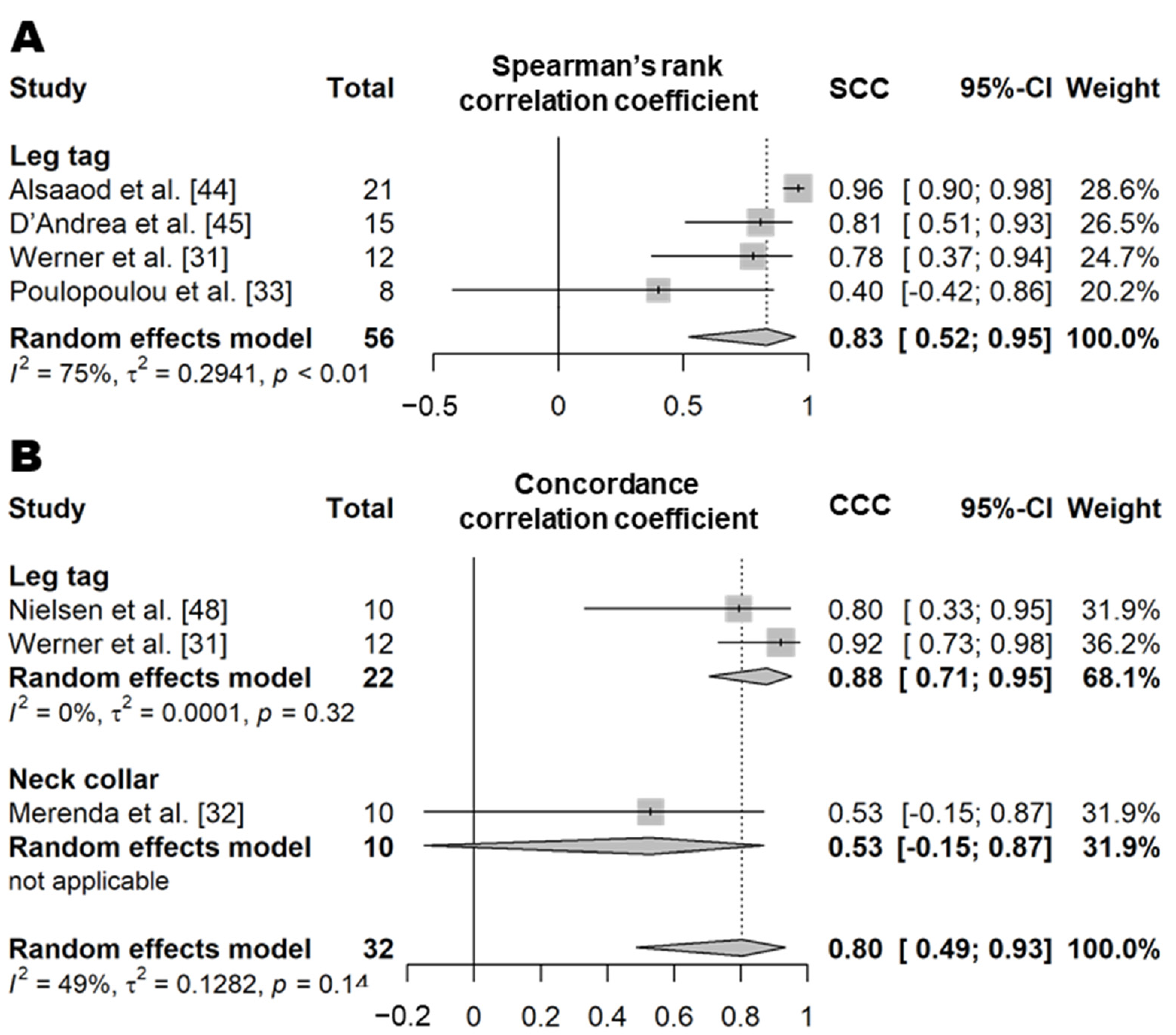

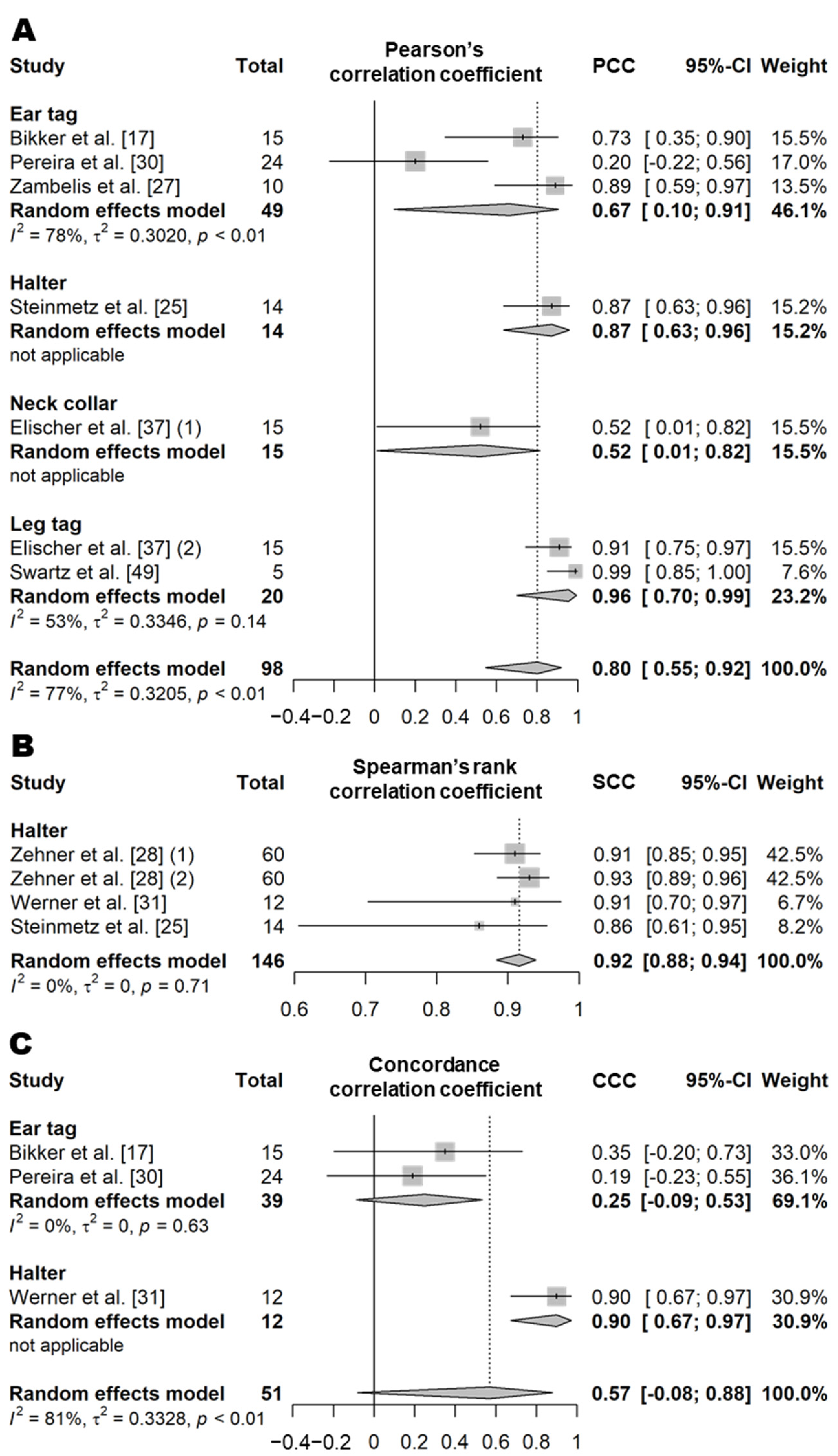
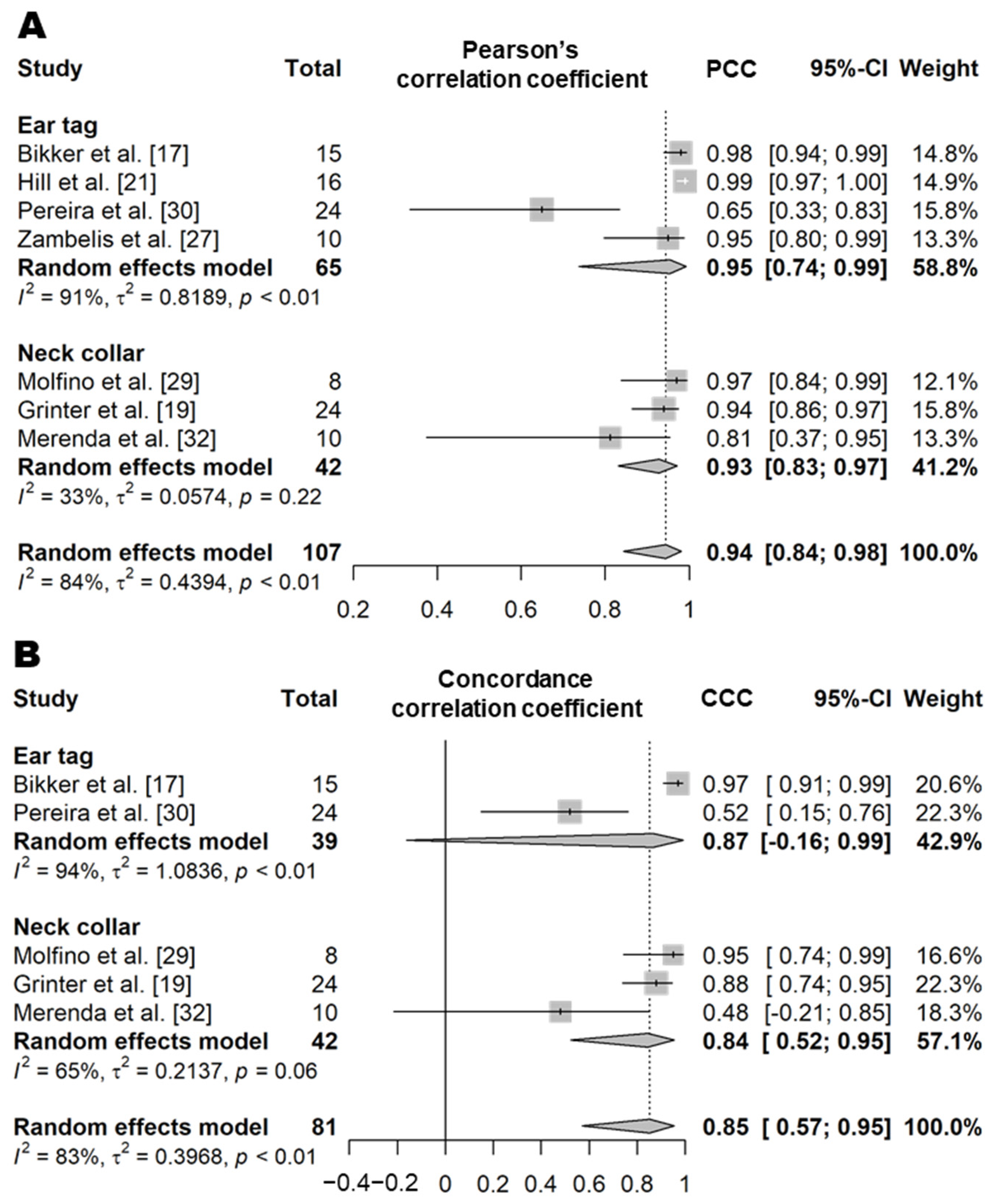
| Product | Company (Parent Company) | Country | Management Software | Mobile Application | Dimensions (mm × mm) | Weight (g) | Battery Life | Range (m) | Built-In Sensors | Detection |
|---|---|---|---|---|---|---|---|---|---|---|
| Tail | ||||||||||
| Smart’Vel | Evolution international | FR | × | × | - | 75 | 5 years | - | Accelerometer | Calving |
| Alert’Vel | ALB Innovation | FR | × | × | - | - | - | 2000 | Accelerometer | Calving |
| Moocall Calving Sensor | Moocall Ltd. | IE | Moocall Breedmanager | ○ | - | - | 60 days | - | Accelerometer | Calving |
| Vagina | ||||||||||
| Vel’Phone | Medria Inc. | FR | Farm’Life® (Vel’Live®) | ○ | 116 × 26 | 87 | - | 1000 | Temperature sensor | Health disorder/Calving |
| Cow Call | Cow Call | IE | × | × | - | - | 2 years | - | Temperature sensor Light sensor | Calving |
Publisher’s Note: MDPI stays neutral with regard to jurisdictional claims in published maps and institutional affiliations. |
© 2021 by the authors. Licensee MDPI, Basel, Switzerland. This article is an open access article distributed under the terms and conditions of the Creative Commons Attribution (CC BY) license (https://creativecommons.org/licenses/by/4.0/).
Share and Cite
Lee, M.; Seo, S. Wearable Wireless Biosensor Technology for Monitoring Cattle: A Review. Animals 2021, 11, 2779. https://doi.org/10.3390/ani11102779
Lee M, Seo S. Wearable Wireless Biosensor Technology for Monitoring Cattle: A Review. Animals. 2021; 11(10):2779. https://doi.org/10.3390/ani11102779
Chicago/Turabian StyleLee, Mingyung, and Seongwon Seo. 2021. "Wearable Wireless Biosensor Technology for Monitoring Cattle: A Review" Animals 11, no. 10: 2779. https://doi.org/10.3390/ani11102779
APA StyleLee, M., & Seo, S. (2021). Wearable Wireless Biosensor Technology for Monitoring Cattle: A Review. Animals, 11(10), 2779. https://doi.org/10.3390/ani11102779






